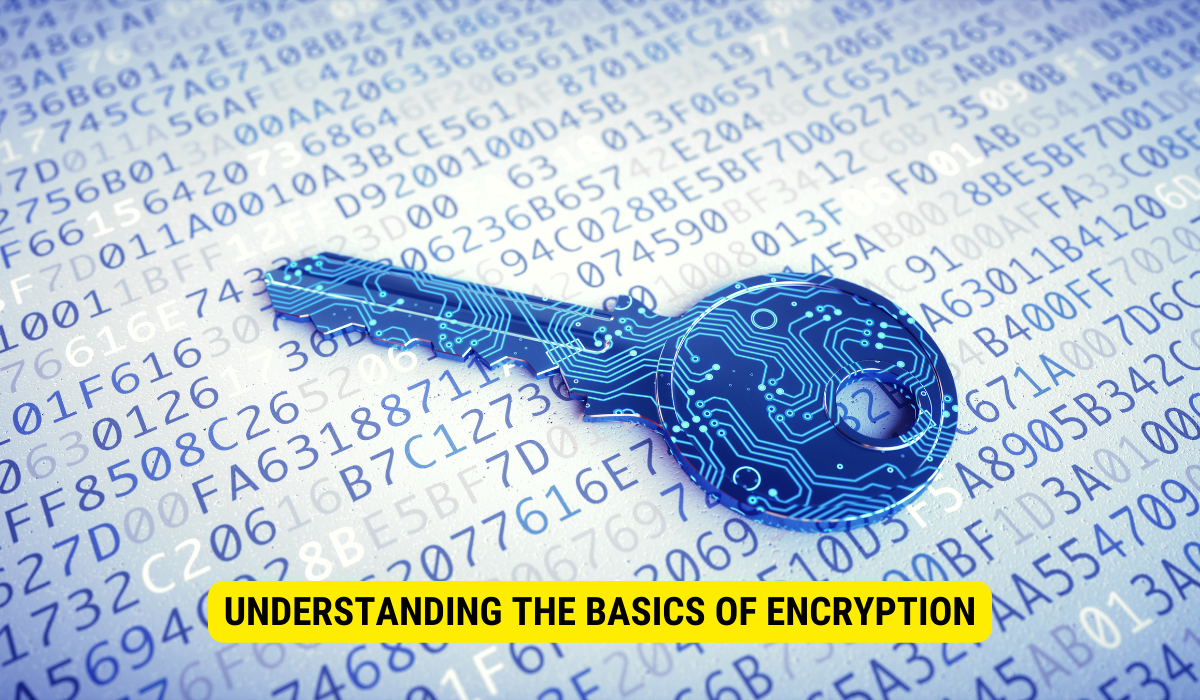To create your HTML encryption for PHP data, follow these steps:
- Plan Your Strategy: Determine what data to encrypt and the encryption algorithm to use.
- Write Encryption Code: Implement the chosen algorithm into your PHP code.
- Thoroughly Test: Ensure correct decryption of encrypted data and handle edge cases.
- Prepare HTML: Identify sensitive data elements in your HTML.
- Add Encryption Code: Use JavaScript to encrypt input data and send it to the server-side PHP script.
- Verify Encryption: Test to ensure secure data transmission and decryption.
In today’s digital world, the need for secure communication has become more prevalent than ever. In web development, protecting sensitive data is of utmost importance. One way to ensure the security of your data is to use encryption techniques. In this article, we will explore the essentials of Encryption, understand its importance in web development, and delve into the process of creating your Encryption for HTML to use before sending out PHP data.
Understanding the Basics of Encryption
Encryption means converting information or data into a code to prevent unauthorized access. It involves using an algorithm to transform the plaintext into ciphertext, making it unreadable to anybody without the designated decryption key. This cryptographic technique provides an additional layer of security, protecting the confidentiality and integrity of the data.
Encryption is a fundamental concept in computer science and information security. It has been used for centuries to guard sensitive information from falling into the wrong hands. Furthermore, Encryption is crucial in safeguarding data transmitted over networks & stored in databases.
What is Encryption?
Encryption converts plain text and data into unreadable text through an algorithm. It ensures that authorized parties can access and understand the encrypted data. In other words, Encryption protects information by scrambling it into an unintelligible form.
The process of Encryption involves several steps. First, the plaintext or original data is transformed using a mathematical algorithm. This algorithm takes the data and applies complex mathematical operations, resulting in a ciphertext. The ciphertext is essentially a scrambled version of the original data, making it difficult for anyone without the decryption key to understand its contents.
Encryption algorithms are designed to be computationally intensive, making it extremely tough for unauthorized individuals to decrypt the data without the proper key. The strong point of an encryption algorithm lies in its ability to resist attacks and maintain the confidentiality of the encrypted data.
Importance of Encryption in Web Development
Encryption is vital in securing sensitive data transmitted between clients and servers in web development. It helps prevent unauthorized interception and access to sensitive information, for instance, login credentials, credit card details, and personal data. By implementing Encryption in your web applications, you can create a secure environment for your users.
One of the most common use cases for Encryption in web development is securing communication between a web browser and a web server. This is typically achieved using the HTTPS protocol, which encrypts the data between the client and the server using the (TLS) Transport Layer Security or Secure Sockets Layer (SSL) protocols.
Encryption also plays a crucial role in shielding data stored in databases. By encrypting sensitive information at rest, even if an attacker accomplishes to gain unauthorized access to the database, the encrypted data will be useless to them without the decryption key.
Different Types of Encryption Techniques
Various encryption techniques are used in web development, each with strengths and weaknesses. Some of the most commonly used encryption techniques include:
- Symmetric Encryption: It Uses a single key to encrypt & decrypt the data. This type of Encryption is fast & efficient, making it suitable for encrypting large amounts of data. Still, the challenge lies in securely sharing the encryption key between the sender and the recipient.
- Asymmetric Encryption: It Utilizes two keys. A public key for encoding and a private key for decryption. This type of Encryption provides higher security as the private key remains secret and is never shared. Asymmetric Encryption is commonly used for secure communication, digital signatures, and key exchange protocols.
- Hash Functions: Converts data into a fixed-length checksum, ensuring data integrity. Hash functions commonly verify data integrity by generating a unique hash value for a given data set. Any change in the data will result in a different hash value, making it easy to notice tampering.
Each encryption technique has its advantages and uses cases. The choice of encryption technique depends on the application’s precise requirements and the level of security needed.
Getting Started with HTML and PHP
Before we dive into creating our Encryption, let’s first understand the basics of HTML and PHP.
Basics of HTML
HTML (Hypertext Markup Language) is the standard language to create the structure and content of web pages. It provides a set of tags and elements that define a web page’s structure, headings, paragraphs, images, links, and other elements.
When you create an HTML document, you start with the <!DOCTYPE html> statement tells the browser that the document is an HTML5 document. The <html> element is the root element of an HTML page, and it contains two main sections: the <head> section and the <body> section.
The <head> section defines the meta-information of the document, such as the title of the page, character encoding, and linked stylesheets or scripts. The <body> section defines the page’s visible content, such as headings, paragraphs, images, and links.
Understanding PHP and Its Role in Web Development
For web development (Hypertext Preprocessor), PHP is a popular server-side scripting language. It allows you to dynamically generate web pages, interact with databases, handle form submissions, and much more. PHP works in conjunction with HTML to create dynamic and interactive web applications.
If a user appeals to a web page that contains PHP code, the server processes the PHP code and generates HTML output, which is then sent to the user’s browser. This allows you to create web pages displaying unalike content based on user input or other conditions.
PHP code is typically written within tags, allowing you to seamlessly switch between HTML and PHP. For example, you can use PHP to retrieve data from a database and then use HTML to display that data on a web page.
How HTML and PHP Work Together?
HTML and PHP work together to create dynamic web pages. HTML is responsible for the structure and presentation, while PHP handles the server-side processing and logic. PHP code is embedded within the HTML markup using special tags, such as <?php ?>, allowing you to mix PHP code with HTML seamlessly.
For example, you can use PHP to create a form that allows users to submit data. When the worker submits the form, the PHP code can process the data and perform actions, for example, storing it in a database or sending an email. The HTML code can then display a confirmation message or forward the user to another page.
By combining the power of HTML and PHP, you can produce dynamic web pages that can interact with users, retrieve and display data from databases, and perform various other tasks. Whether you’re building a simple contact form or a difficult e-commerce website, HTML and PHP are essential tools in modern web development.
Steps to Create Your Encryption
Now that we have a solid understanding of the basics, let’s look at the steps in creating your Encryption.
Planning Your Encryption Strategy
Before diving into coding, it is crucial to plan your encryption strategy. Determine what data needs to be encrypted, the encryption algorithm used, and how the encrypted data will be decrypted on the server side. Careful planning will ensure the efficiency and effectiveness of your encryption implementation.
Writing the Encryption Code
Once you have a clear plan, it’s time to start writing the encryption code. This involves selecting the appropriate encryption algorithm and implementing it into your code. There are several encryption libraries and functions available in PHP that you can leverage to streamline the encryption process.
Testing Your Encryption
After writing the encryption code, it is essential to thoroughly test your implementation. Create test scenarios and verify that the encrypted data can be decrypted correctly. Pay close attention to potential edge cases and ensure your encryption process can handle them seamlessly. Testing will help identify and fix any bugs or vulnerabilities in your encryption implementation.
Implementing Encryption in HTML
Now that we have created our Encryption let’s explore how to implement it in HTML.
Preparing Your HTML for Encryption
Before adding the encryption code to your HTML, ensure that you clearly understand which data needs to be encrypted. Identify the elements and fields that contain sensitive information and require Encryption.
Adding the Encryption Code to HTML
Once you have identified the elements that need Encryption, it’s time to add the encryption code to your HTML. This involves leveraging JavaScript to capture the input data, encrypt it using the encryption algorithm you have created, and send the encrypted data to the server-side PHP script for processing.
Verifying the Encryption in HTML
After adding the encryption code to your HTML, verifying that the encrypted data is correctly transmitted to the server-side PHP script is crucial. Test various input scenarios and ensure the encrypted data is securely sent and decrypted on the server side.
Key Takeaways
- Encryption is crucial for securing sensitive data in web development.
- Encryption involves converting data into an unreadable format using algorithms.
- It plays a significant role in safeguarding data during transmission and storage.
- Different encryption techniques like symmetric, asymmetric, and hash functions have distinct advantages.
- HTML and PHP work together to create dynamic web applications with enhanced security.
FAQs
What is encryption in web development?
Encryption is the process of converting data into an unreadable format to protect it from unauthorized access during transmission and storage.
Why is encryption important in web development?
Encryption ensures the security of sensitive data, such as login credentials and personal information, preventing unauthorized access.
What are the different types of encryption techniques used in web development?
Common encryption techniques include symmetric encryption, asymmetric encryption, and hash functions, each with specific use cases.
How do HTML and PHP work together in web development?
HTML defines the structure and presentation of web pages, while PHP handles server-side processing and logic, allowing dynamic content creation.
What are the steps to create your HTML encryption for PHP data?
Steps include planning your encryption strategy, writing the encryption code, testing it, preparing HTML for encryption, adding encryption code to HTML, and verifying the encryption.
Conclusion
By following the above steps, you can create your own HTML encryption before sending out PHP data. Encryption adds an extra layer of shield to your web applications, ensuring the confidentiality and integrity of your data. Implementing encryption techniques not only secures sensitive information but also builds trust among your users. Stay one step ahead in web development by prioritizing the security of your data through Encryption.


